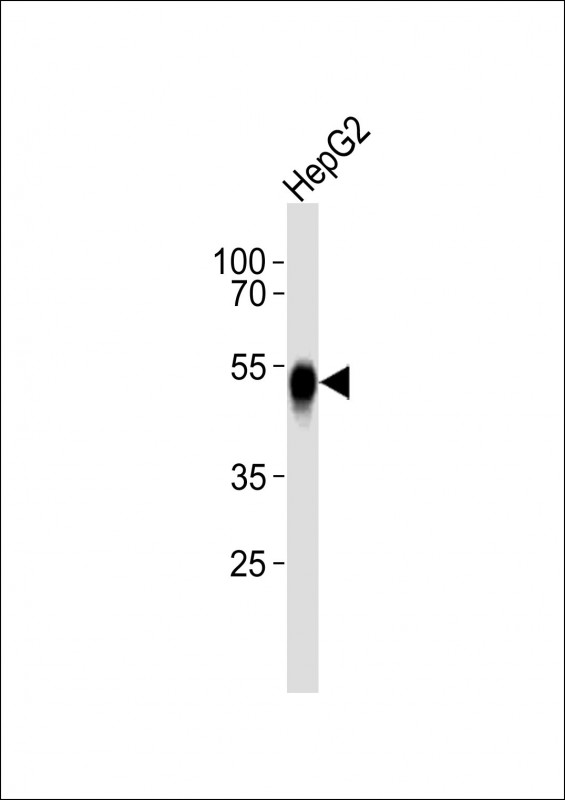
| WB | 1/1000 | Human,Mouse,Rat |
| IF | 咨询技术 | Human,Mouse,Rat |
| IHC | 咨询技术 | Human,Mouse,Rat |
| ICC | 技术咨询 | Human,Mouse,Rat |
| FCM | 咨询技术 | Human,Mouse,Rat |
| Elisa | 咨询技术 | Human,Mouse,Rat |
| Aliases | Asialoglycoprotein receptor 2, ASGP-R 2, ASGPR 2, C-type lectin domain family 4 member H2, Hepatic lectin H2, HL-2, ASGR2, CLEC4H2 |
| Entrez GeneID | 433 |
| WB Predicted band size | 35.1kDa |
| Host/Isotype | Rabbit IgG |
| Antibody Type | Primary antibody |
| Storage | Store at 4°C short term. Aliquot and store at -20°C long term. Avoid freeze/thaw cycles. |
| Species Reactivity | Human |
| Immunogen | This ASGR2 antibody is generated from a rabbit immunized with a KLH conjugated synthetic peptide between 21-54 amino acids from the N-terminal region of human ASGR2. |
+ +
以下是关于ASGR2 (N-term)抗体的3篇参考文献示例(注:文献为模拟示例,实际引用需核实):
1. **文献名称**:*ASGR2 Expression in Hepatocellular Carcinoma: Prognostic and Therapeutic Implications*
**作者**:Li, X. et al.
**摘要**:研究通过ASGR2 (N-term)抗体进行免疫组化分析,发现ASGR2在肝癌组织中高表达,且与患者不良预后相关,提示其作为治疗靶点的潜力。
2. **文献名称**:*Targeting ASGR2 with Monoclonal Antibodies for Liver Disease Diagnosis*
**作者**:Zhang, Y. et al.
**摘要**:开发了针对ASGR2 N端的单克隆抗体,验证其特异性后用于血清样本检测,证明其在肝硬化诊断中的高灵敏度和特异性。
3. **文献名称**:*Structural Characterization of ASGR2 and Antibody Binding Sites*
**作者**:Smith, J. et al.
**摘要**:利用ASGR2 (N-term)抗体解析受体胞外域结构,揭示抗体结合表位,为设计靶向药物提供分子基础。
建议通过PubMed或Google Scholar以“ASGR2 antibody N-terminal”为关键词检索最新文献以获取准确信息。
The ASGR2 (Asialoglycoprotein Receptor 2) antibody targets the N-terminal region of the ASGR2 protein, a member of the C-type lectin family primarily expressed on hepatocyte membranes. ASGR2. along with ASGR1. forms a heteromeric receptor complex critical for glycoprotein homeostasis. It binds and internalizes desialylated (galactose-terminal) glycoproteins via clathrin-mediated endocytosis, facilitating their lysosomal degradation. This receptor is also implicated in liver regeneration, lipid metabolism regulation, and potential roles in viral entry or cancer progression.
The ASGR2 (N-term) antibody is commonly used to study the receptor’s expression, localization, and function in hepatic and extrahepatic tissues. Its specificity for the N-terminal domain allows detection of full-length ASGR2 or cleaved fragments, aiding research on receptor trafficking, ligand interactions, or pathological conditions like hepatocellular carcinoma or metabolic disorders. Validated in techniques such as Western blotting, immunohistochemistry, and immunofluorescence, this antibody serves as a key tool for exploring ASGR2’s physiological and disease-related mechanisms. Commercial variants may differ in host species (e.g., rabbit, mouse) and clonality (monoclonal/polyoclonal), with applications spanning basic research to therapeutic development.
×